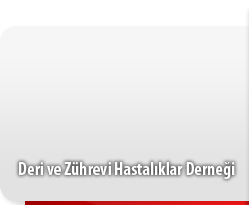Clinical and histopathological evaluation of the effects of platelet rich plasma, platelet poor plasma and topical serum physiologic treatment on wound healing caused by radiofrequency electrosurgery in ratsAslı Duran1, Sirin Yasar2, Sema Aytekin2, Pembegul Gunes3, Riza Adaleti4, Alpay Duran51Şanlıurfa Balıklıgöl State Hospital, Clinic of Dermatology, Şanlıurfa, Turkey
2University of Health Sciences, Haydarpaşa Numune Training and Research Hospital, Clinic of Dermatology, İstanbul, Turkey
3University of Health Sciences, Haydarpaşa Numune Training and Research Hospital, Clinic of Pathology, Istanbul Turkey
4University of Health Sciences, Haydarpaşa Numune Training and Research Hospital, Clinic of Microbiology, İstanbul, Turkey
5Şanlıurfa Mehmet Akif İnan Training and Research Hospital, Clinic of Plastic and Reconstructive Surgery, Şanlıurfa, Turkey
Background and Design: The aim of our study was to histopathologically evaluate the effects of platelet rich plasma (PRP) and platelet poor plasma (PPP) treatment in wound healing process in rats with partial thickness wound.
Materials and Methods: Rats were divided into three groups as topical serum physiologic (SP) (group 1, n=9), PPP (group 2, n=9), and PRP (group 3, n=9). Wound model was created by radiofrequency-electrosurgery. Each group was treated once with SP, PRP and PPP. Four-millimeter punch biopsies were collected from each rat on the 4th, 7th, 14th and 21st days. One rat in each of the PRP and SP groups was lost before the study was completed.
Results: In our study, we observed that PRP significantly increased granulation tissue formation and angiogenesis after the fourth day of treatment. PPP increased granulation tissue formation and angiogenesis to a lesser extent than PRP but to a greater extent compared to SP. An increase in fibroblast density was observed in PRP and PPP groups compared to that in SP group on the 7th, 14th and 21st days. Epidermal detachment was significantly increased in the PRP group compared to PPP group on the 4th day. On 7th and 14th days, a higher increase was observed in the PPP and PRP groups compared to SP group. On the 21st day, epidermal detachment was observed in all the three groups. In terms of collagen synthesis levels, a significant increase was observed in PPP group compared to SP group on the 4th day and a significant increase was observed in PRP group compared to PPP group on the 21st day. There was no significant difference between groups on the 7th and 14th days.
Conclusion: In our study, we observed that both PRP and PPP stimulate and increase angiogenesis, reepithelization, granulation tissue and collagen synthesis compared to SP. We observed that there was a significant increase in angiogenesis and granulation tissue formation in PRP group compared to PPP group. Keywords: PRP, PPP, SP, wound healing, angiogenesis, granulation, fibrosis, epithelization
Sıçanlarda radyofrekans elektrocerrahi ile oluşturulmuş yarada trombositten zengin plazma, trombositten fakir plazma ve topikal serum fizyolojik tedavisinin yara iyileşmesine etkisinin klinik ve histopatolojik olarak değerlendirilmesiAslı Duran1, Sirin Yasar2, Sema Aytekin2, Pembegul Gunes3, Riza Adaleti4, Alpay Duran51Şanlıurfa Balıklıgöl Devlet Hastanesi, Dermatoloji Kliniği, Şanlıurfa, Türkiye
2Haydarpaşa Numune Eğitim ve Araştırma Hastanesi, Dermatoloji Kliniği, İstanbul, Türkiye
3Haydarpaşa Numune Eğitim ve Araştırma Hastanesi, Patoloji Kliniği, İstanbul, Türkiye
4Haydarpaşa Numune Eğitim ve Araştırma Hastanesi, Mikrobiyoloji Kliniği, İstanbul, Türkiye
5Mehmet Akif İnan Eitim ve Araştırma Hastanesi, Plastik, Rekonstrüktif ve Estetik Cerrahi Kliniği, Şanlıurfa, Türkiye
Amaç: Çalışmamızın amacı trombositten zengin plazma (PRP) ve trombositten fakir plazmanın (PPP) kısmi kalınlıklı yara oluşturulmuş ratlarda yara yeri iyileşmesinde oluşturacağı etkilerin histopatolojik olarak değerlendirilmesidir.
Gereç ve Yöntem: Sıçanlar, serum fizyolojik (SF) (grup 1, n=9), PPP (grup 2, n=9), PRP (grup 3, n=9) grubu olacak şekilde 3 gruba ayrıldı. Radyofrekans-elektrocerrahi yöntemi ile yara modeli oluşturuldu. Her bir gruba SF, PRP, PPP uygulaması bir kez uygulandı. Her sıçandan, işlemi takip eden 4. 7. 14. ve 21. günlerde 4 mm punch biyopsiler alındı. SF ve PRP uygulanan deney gruplarında birer sıçan çalışma sürerken kaybedilmiştir.
Bulgular: Çalışmamızda 4. gün sonrası PRPnin SF ve PPP grubuna göre granülasyon dokusu ve anjiogenezi anlamlı düzeyde arttırdığı sonucuna ulaşıldı. Bununla birlikte PPPnin de PRPden daha az oranda olmakla birlikte anjogenez ve granülasyon dokusu oluşumunu SF grubuna göre anlamlı düzeyde arttırdığı sonucuna saptandı. Fibroblast yoğunlukları değerlendirildiğinde 7. 14. ve 21. günlerde PRP ve PPP gruplarında SF grubuna oranla fibroblast yoğunluğunda anlamlı bir artış belirlendi. Çalışmamızda epidermal ayrışmayı PRP grubunun 4. günde PPP grubuna göre anlamlı düzeyde arttırdığı sonucuna ulaşıldı. Yedinci ve on dördüncü günlerde PPP ve PRP grubunda SF gruplarına oranla anlamlı artış sağlandı. Yirmi birinci günde ise her üç grupta epidermal ayrışma gözlendi. Çalışmamızda kollajen sentez düzeyleri değerlendirildiğinde yapılan ikili karşılaştırmalarda 4. günde PPP grubunda SF grubuna göre, 21. günde ise PRP grubunun PPP grubuna oranla anlamlı düzeyde arttırdığı saptanırken 7. ve 14. günlerde gruplar arası anlamlı fark saptanmadı.
Sonuç: Çalışmamızda gerek PRP grubunun, gerekse PPP grubunun, kontrol grubuna göre anjiyogenez, reeepitelizasyon, granülasyon dokusu ve kollajen oluşumunu anlamlı düzeyde daha fazla uyardığı ve arttırdığı saptandı. Özellikle PRP grubunda anjiyogenez ve granülasyon dokusu oluşumunun PPP grubuna oranla daha anlamlı düzeyde artış gösterdiği sonucuna ulaşıldı. Anahtar Kelimeler: TZP, TFP, SF, yara iyileşmesi, anjiyogenez, granülasyon, fibrozis, epitelizasyon
Aslı Duran, Sirin Yasar, Sema Aytekin, Pembegul Gunes, Riza Adaleti, Alpay Duran. Clinical and histopathological evaluation of the effects of platelet rich plasma, platelet poor plasma and topical serum physiologic treatment on wound healing caused by radiofrequency electrosurgery in rats. Turkderm-Turk Arch Dermatol Venereol. 2018; 52(2): 44-50
Corresponding Author: Aslı Duran, Türkiye |
|



